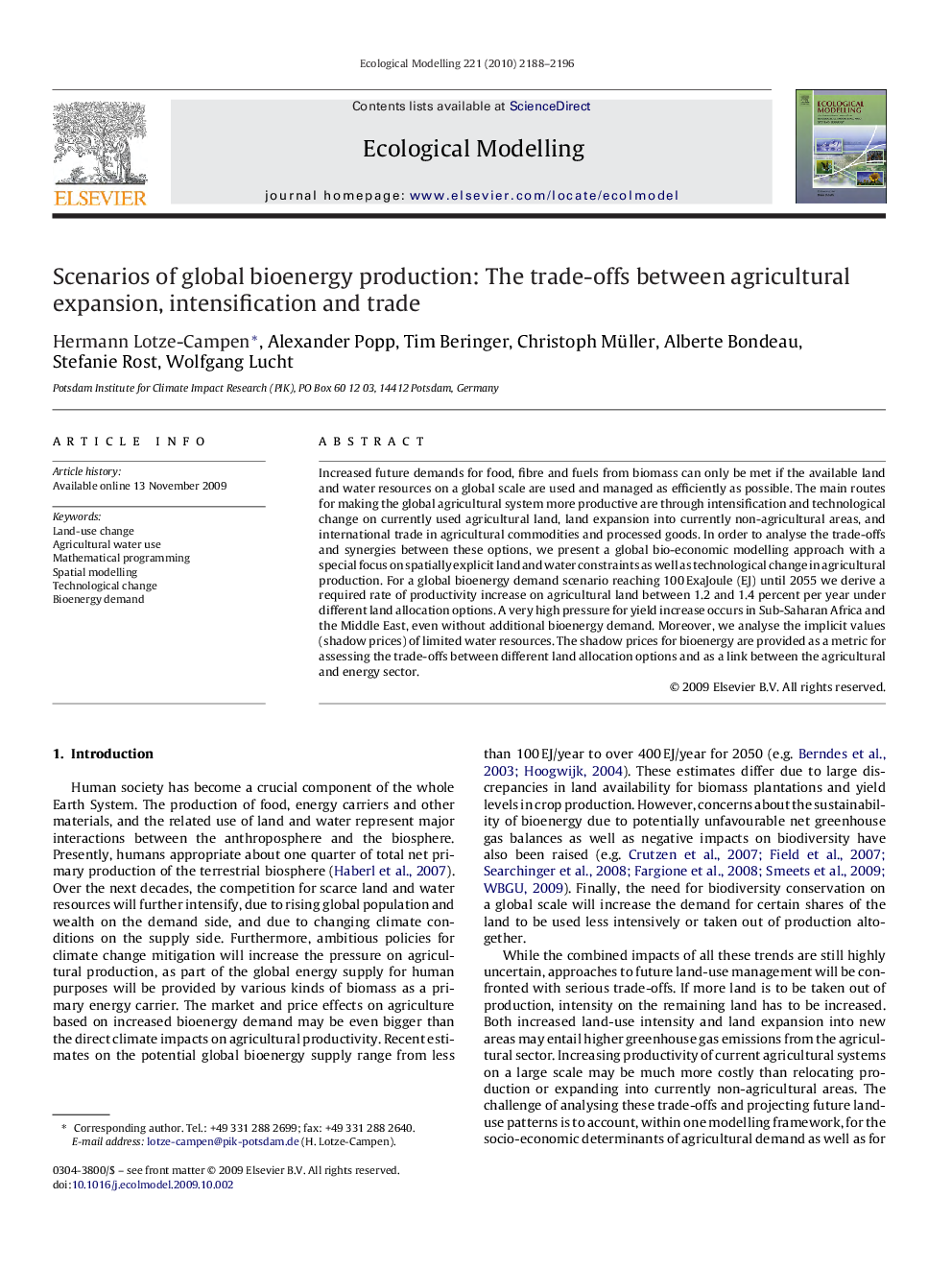| Article ID | Journal | Published Year | Pages | File Type |
|---|---|---|---|---|
| 4377135 | Ecological Modelling | 2010 | 9 Pages |
Increased future demands for food, fibre and fuels from biomass can only be met if the available land and water resources on a global scale are used and managed as efficiently as possible. The main routes for making the global agricultural system more productive are through intensification and technological change on currently used agricultural land, land expansion into currently non-agricultural areas, and international trade in agricultural commodities and processed goods. In order to analyse the trade-offs and synergies between these options, we present a global bio-economic modelling approach with a special focus on spatially explicit land and water constraints as well as technological change in agricultural production. For a global bioenergy demand scenario reaching 100 ExaJoule (EJ) until 2055 we derive a required rate of productivity increase on agricultural land between 1.2 and 1.4 percent per year under different land allocation options. A very high pressure for yield increase occurs in Sub-Saharan Africa and the Middle East, even without additional bioenergy demand. Moreover, we analyse the implicit values (shadow prices) of limited water resources. The shadow prices for bioenergy are provided as a metric for assessing the trade-offs between different land allocation options and as a link between the agricultural and energy sector.
